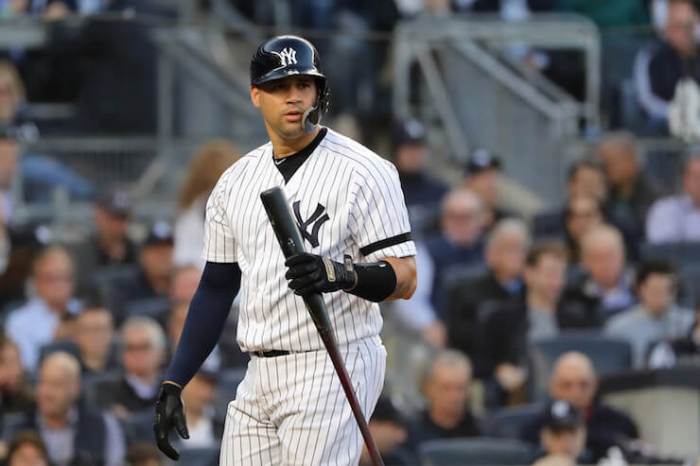It’s a goal, not a mandate.
More important words could not have been spoken at Fenway Park over the last week, as the Boston Red Sox explained to the media that their plan for 2020 is to cut payroll.
Just days after principal owner John Henry talked about the organization’s “need” to get under next year’s $208 million Competitive Balance Tax, Red Sox president and CEO Sam Kennedy stressed a fairly important clarification.
“The CBT is always a guidepost in our budgeting, as we build our financial plans for the following season,” said Kennedy in a press conference at Fenway on Monday. “We use CBT as one guidepost. It’s something we consider.
“John and Tom have shown a willingness — I believe in the past 17 years, we’ve been over that CBT threshold 10 times,” added Kennedy. “And we will continue to demonstrate a willingness to go over. That said, John made it clear that there is a goal to try and get under the CBT in 2020. But he also said — and Tom followed up and clarified — that is a goal, but not a mandate.”
I, for one, am thrilled to hear that clarification. That’s not sarcasm. It’s actually great news.
Look what we’ve done since Henry made the initial comments about cutting payroll last Friday. We’ve turned it into a “What’s next for Mookie” campaign. I’m guilty of that as well. But the more I think about Mookie Betts’ future as he enters the final year of his contract in 2020, the more I feel it’s ultimately up to him and what he wants, rather than what the Red Sox payroll situation is.
Obviously there’s a number that the Red Sox are not going to go over in their future contract negotiations with Betts and his representatives. But everyone from Henry to Werner to Kennedy, all the way down to the clubhouse manager knows that the starting price for a Betts contract is $300 million. That’s not a blind estimation. That’s the actual market value that’s been set by players like Nolan Arenado, Manny Machado, Bryce Harper, and Mike Trout, just to name a few.
There’s still plenty of time to negotiate with Betts. The Red Sox have to talk to him anyways, as he’s arbitration eligible for next season. A one-year agreement to avoid arbitration might even be used as an extension for such long-term contract talks, similar to Arenado signing a one-year, $26 million deal with the Colorado Rockies last offseason to avoid arbitration. Weeks later, they ripped up that one-year deal and agreed to an eight-year, $260 million extension.
Perhaps the Red Sox and Betts can agree to a long-term extension this offseason. Even with all the talk about cutting payroll, it sure sounds like the Red Sox want to lock him up. And if they want to lock him up, they certainly know what the aforementioned market value is.
“We absolutely love Mookie Betts as a player, as a person, we’ve gotten to know his family,” said Kennedy on Monday. “You hope that he’s a guy that is here for the long term.
“And so, Tom Werner made it clear that we’ve engaged with some frequency with [Betts’] representatives in years past. We met with them recently. He’s got very, very, very smart and shrewd representation. And so, we’ll continue to talk and see where we go.”
If the Red Sox lowball Betts, then we’ll find out about it. And if they make Betts a $300 million offer and he rejects it, we’ll also hear about that. If no deal is reached, I expect the reason to be leaked. But a major misconception right now is that the Red Sox won’t offer Betts a $300 million deal because they’ve gone public about wanting to get under the luxury tax threshold, which they’ve been above for the last two years. If they exceed that threshold for the third straight season, then the base tax rate increases to 50 percent with hefty surcharges.
Important to note, once again, getting under that threshold is a goal, not a mandate.
The Red Sox could very well make Betts a $300 million offer this winter and still make corresponding moves to shed salary elsewhere. It’s actually a very realistic possibility.
They could trade David Price and his $96 million over the next three years, while adding some other young and affordable pieces — maybe an Andrew Benintendi — to that trade in order to convince another team to take on Price’s contract. And for all we know, J.D. Martinez is going to utilize his opt-out clause and hit free agency.
Combine Martinez’ $23.8 million he’s owed next season with Price’s $32 million salary, that would be nearly $56 million off the books in 2020. In 2019, the Red Sox’ payroll was around $240 million.
Add that $56 million to the departing 2019 salaries of Rick Porcello ($20.6 million), Pablo Sandoval (18.5 million), Mitch Moreland ($6.5 million), Steve Pearce ($6.3 million), and Eduardo Nunez ($5 million), and you have an additional $56.9 million off the books, freeing up a total of $113 million for next season. That would give the Red Sox $80 million to spend this winter in order to stay just under the $208 million luxury tax threshold.
Sure, it might be a lot of work to keep Betts. Nobody said being the general manager of the Boston Red Sox was easy.
Perhaps the Red Sox are willing to do that work, at least, we shouldn’t rule it out. But if Betts is dead set on testing the free-agent market after next season and looking to become the highest paid athlete in North American sports history, topping Trout’s $430 million contract, then let the record show that, ultimately, it’ll be his decision to leave Boston.
Listen to “The Danny Picard Show” on PodcastOne, iTunes, and Spotify. Watch “dPs LIVE” on YouTube and Twitch. Follow him on Twitter @DannyPicard.






















